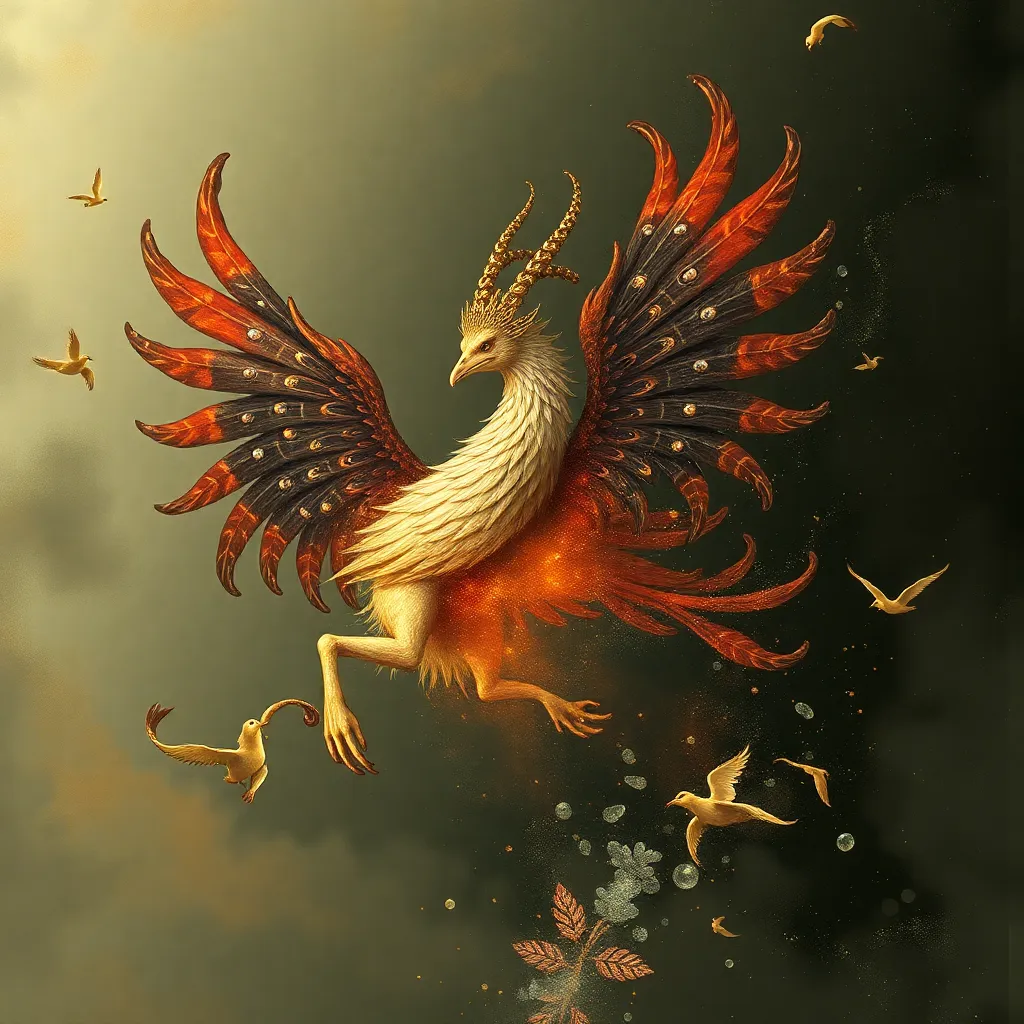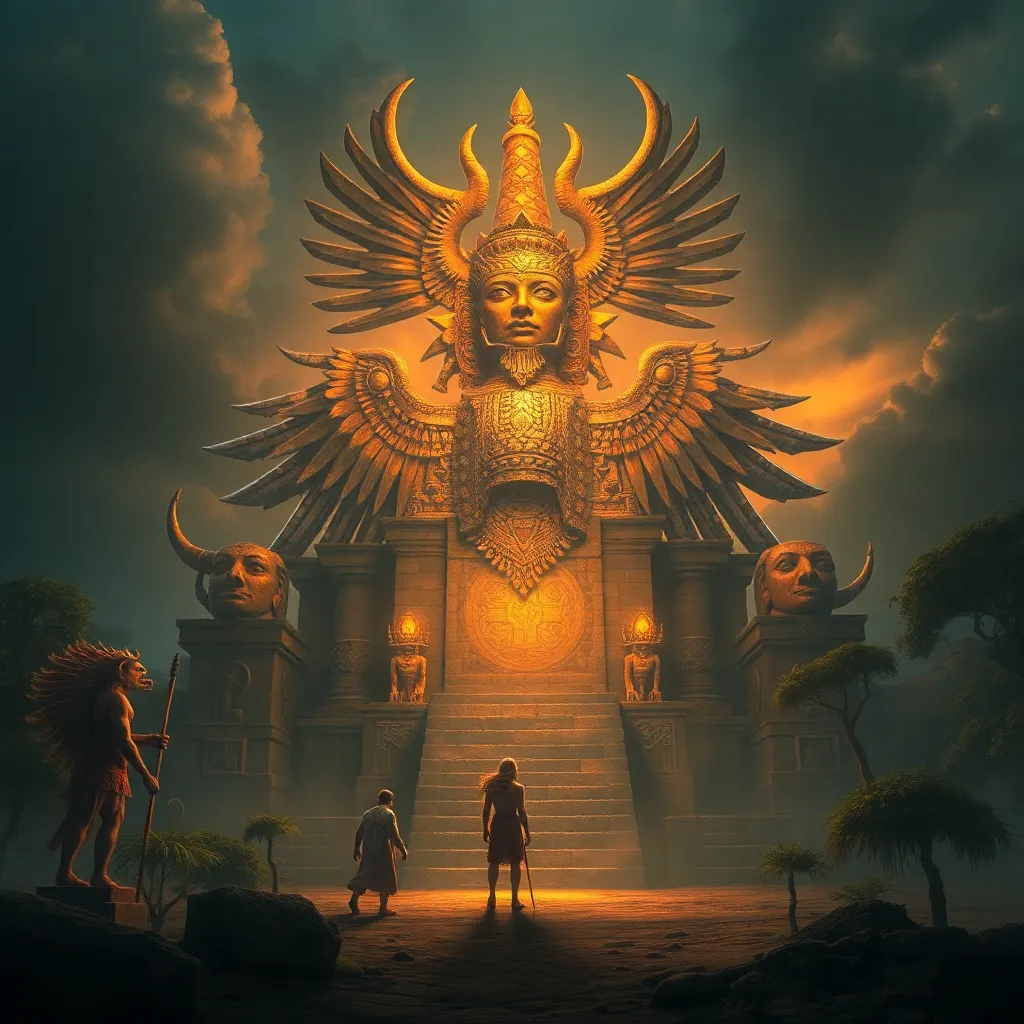The Roc in Chinese Opera: A Creature of Spectacle and Wonder
I. Introduction
Chinese Opera is a vibrant and dynamic art form that has been an integral part of Chinese cultural heritage for centuries. It combines music, vocal performance, mime, dance, and acrobatics to tell stories that resonate with the audience’s emotions and cultural values. The rich tapestry of Chinese Opera is woven with mythical creatures, historical figures, and moral lessons that reflect the complexities of human experience.
Among these mythical beings, the Roc stands out as a creature of immense size and power, often depicted as a giant bird capable of soaring to great heights. The Roc, known for its majestic presence and extraordinary abilities, holds a significant place in Chinese folklore and mythology. This article aims to explore the Roc’s role and representation in Chinese Opera, highlighting its cultural significance, artistic portrayal, and enduring legacy.
II. The Mythology of the Roc
The origins of the Roc can be traced back to ancient Chinese texts, where it is often mentioned as a symbol of strength and freedom. It is believed to have originated from the “Shan Hai Jing” or “Classic of Mountains and Seas,” a compilation of mythological geography and creatures. The Roc is described as a bird of immense proportions, capable of flying great distances and representing the ideals of liberation and transcendence.
In terms of symbolism, the Roc embodies attributes such as:
- Power and strength
- Freedom and independence
- Transformation and ascension
When compared to other mythical creatures in Chinese mythology, such as the dragon or phoenix, the Roc represents a unique aspect of nature’s might and the limitless potential of the spirit. While dragons often symbolize authority and control, and phoenixes represent rebirth and immortality, the Roc emphasizes the theme of liberation and the thrill of boundless adventure.
III. The Roc in Chinese Opera: A Symbol of Power and Majesty
In Chinese Opera, the Roc is depicted in various performances, often serving as a powerful symbol of majesty and freedom. Its presence on stage evokes themes of aspiration and the human desire to rise above earthly limitations. The Roc’s portrayal can be seen in numerous operatic works where it embodies the struggles and triumphs of the characters.
Some notable themes associated with the Roc in opera include:
- The pursuit of freedom and independence
- The struggle against oppression and tyranny
- The celebration of nature’s grandeur and beauty
Case studies of operas featuring the Roc reveal how its character is woven into the narrative, enriching the storyline and enhancing the emotional impact on the audience. For example, in “The Legend of the White Snake,” the Roc appears as a metaphor for the protagonist’s longing for freedom and the quest to break free from societal constraints.
IV. The Artistic Representation of the Roc
The artistic representation of the Roc in Chinese Opera is a spectacle that combines elaborate costuming, intricate makeup design, and innovative stagecraft. The costumes for the Roc often feature vibrant colors and intricate patterns, symbolizing its majestic qualities. Performers may don wings or elaborate headdresses that enhance the visual impact of the Roc’s character.
Makeup plays a crucial role in depicting the Roc’s grandeur. The use of bold colors and striking designs helps convey its mythical nature. The makeup may include:
- Bright reds and golds to symbolize power
- Feather-like patterns to mimic the Roc’s plumage
- Exaggerated facial features to enhance expressiveness
Stagecraft and special effects are also employed to bring the Roc to life. Techniques such as aerial performances, puppetry, and lighting effects create an illusion of flight and grandeur, captivating the audience. The choreography and movement of the performers are carefully crafted to mimic the Roc’s soaring grace and commanding presence, making each performance a mesmerizing spectacle.
V. Music and Soundscapes: The Roc’s Auditory Presence
Music plays a vital role in reinforcing the Roc’s character within Chinese Opera. Specific musical motifs associated with the Roc enhance its majestic portrayal and evoke emotions connected to its symbolism. Traditional instruments such as the erhu, pipa, and gongs contribute to creating a unique soundscape that complements the visual elements of the performance.
Notable aspects include:
- The use of soaring melodies that mirror the Roc’s flight
- Rhythmic patterns that convey power and dynamism
- Instrumental interludes that highlight moments of tension and release
Specific arias or compositions featuring the Roc often showcase the virtuosity of the performers, inviting the audience to experience the Roc’s extraordinary essence through sound. These musical elements work in harmony with the visual and narrative aspects, creating a holistic operatic experience.
VI. Audience Reception and Interpretation
Throughout history, audience perceptions of the Roc in Chinese Opera have evolved. In traditional contexts, the Roc was seen as a formidable symbol of hope and aspiration, resonating with the desires of the common people for freedom and liberation from oppression. Its majestic portrayal on stage inspired admiration and reverence.
In contemporary society, the Roc continues to be interpreted as a symbol of hope and aspiration, reflecting the values of resilience and determination. The Roc’s portrayal has a profound impact on audience engagement, drawing spectators into the narrative and encouraging them to reflect on their own aspirations and struggles.
VII. The Roc in Contemporary Adaptations
In modern times, the Roc has found its way into various adaptations of Chinese Opera and beyond. Contemporary interpretations explore new artistic directions while retaining the essence of the Roc’s symbolism. The Roc’s influence can be seen in popular culture, film, and literature, where it often represents themes of empowerment and transcendence.
Some notable areas of influence include:
- Film adaptations of traditional operas featuring the Roc
- Literary works that draw on Roc mythology for thematic exploration
- Visual arts that depict the Roc in contemporary styles
The Roc’s relevance in today’s artistic expressions underscores its enduring legacy and the universal themes it represents, bridging the past with the present.
VIII. Conclusion
In summary, the Roc holds significant importance in Chinese Opera as a symbol of power, freedom, and transcendence. Its majestic portrayal captivates audiences and enriches the narrative, making it a central figure in the operatic tradition. The continuing legacy of the Roc reflects the intersection of myth, art, and performance, celebrating the human spirit’s desire to soar above limitations.
As we explore the Roc’s role in Chinese Opera, we are reminded of the rich cultural narratives that continue to inspire generations, inviting us to embrace the wonder and spectacle that such mythical creatures represent.



